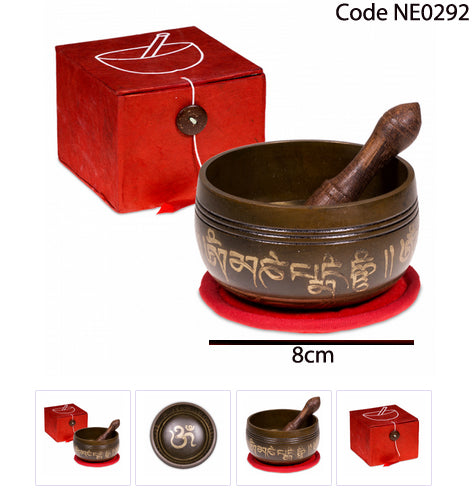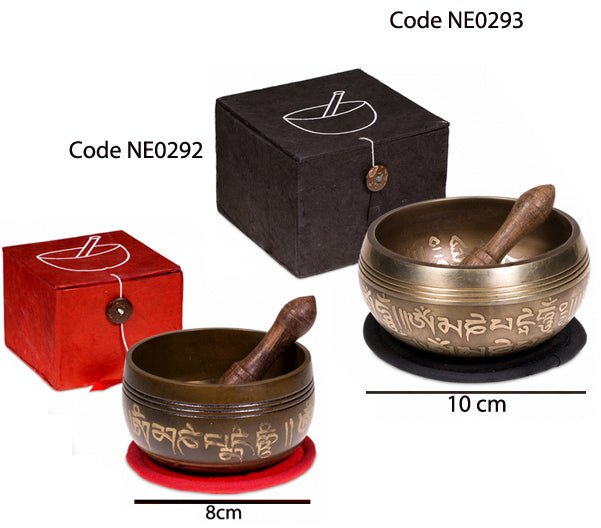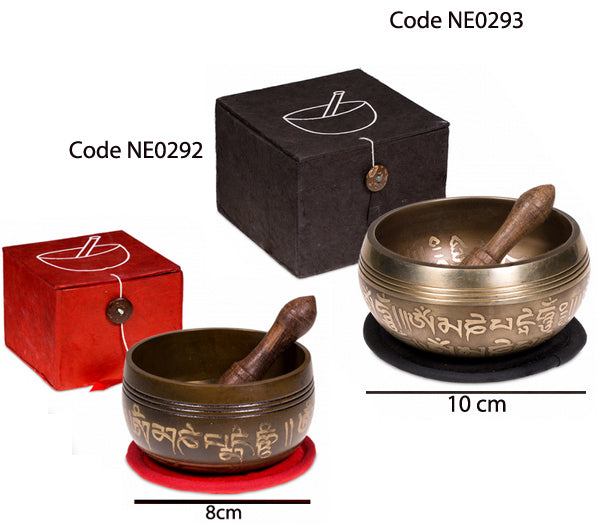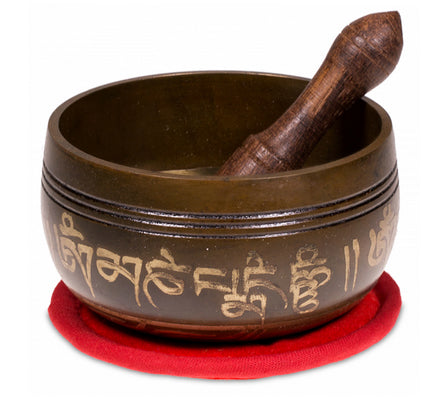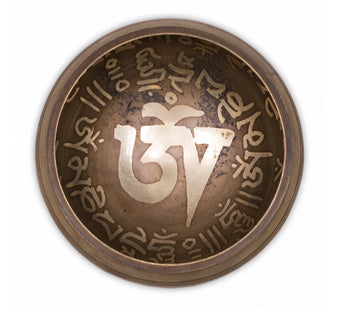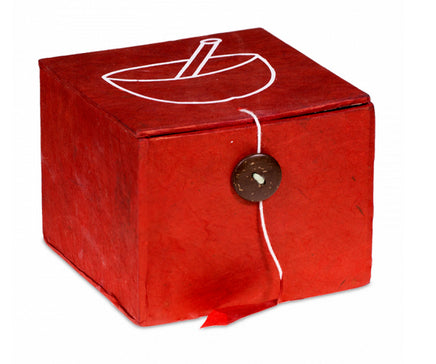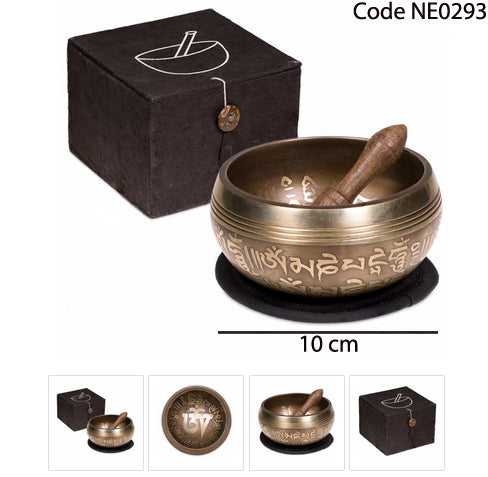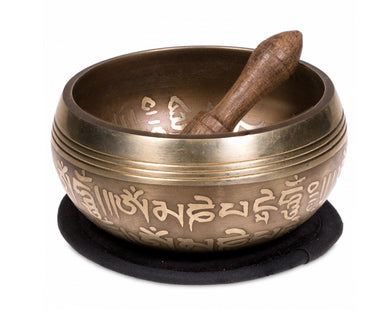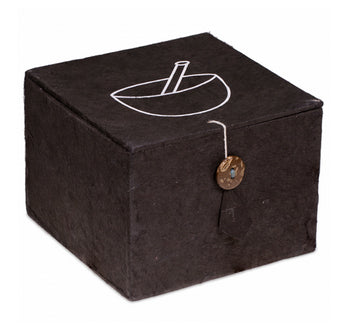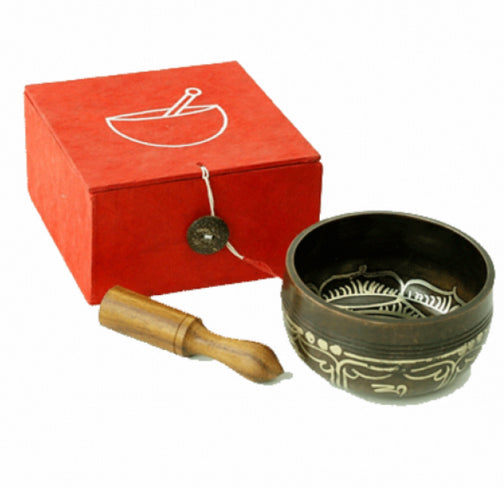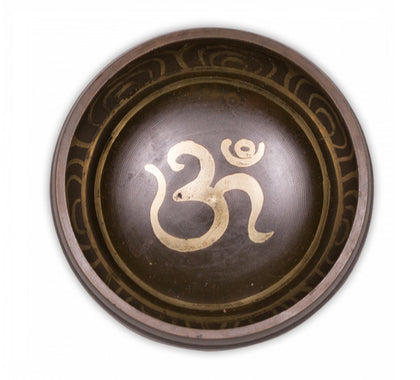Singing bowl with engravings – 8 or 10 cm (180-300 g) – Complete travel set, perfect!
Singing bowl with engravings – 8 or 10 cm (180-300 g) – Complete travel set, perfect!
Couldn't load pickup availability
- ✧─────✧
About the product:
→ → Name/Type: Singing bowl with Mantra (prayer) engravings
🌍 Origin: China
📐 Dimensions: Ø 8 and 10 centimeters
⚖️ Weight: ± 180 and 300 grams
🧬 Materials: 7 precious metals = copper, tin, nickel, zinc, iron, lead, mercury, silver
📦 Packaging: Sold individually in a dedicated box with mallet and cushion
🎶 Sound type: Bright, treble to mid-range, and fairly long-lasting
🎁 Ideal as a gift or a treat for yourself!
👉 Important to know: The percentages of metals, the diameter and the thickness of the different bowls provide the specific sound and harmonics of each singing bowl. Each bowl is therefore unique.
📎 Information on the process of hammering Tibetan singing bowls
During the manufacturing process, the different metals that make up the bowl are melted in a furnace (copper, tin, iron, lead, gold, and silver) depending on the type of bowl desired, such as bronze bowls or bowls made of the seven metals. The molten metal is then poured into a mold to obtain a metal disc of the desired size and thickness.
At this stage, the metal disc is modeled after being weighed and measured very precisely and then classified according to the type of bowl to come.
Regarding the actual hammering process, 4 or 5 discs are stacked on top of each other and then heated until they become incandescent.
The incandescent metal disc formed is then hammered by skilled craftsmen until the metal is no longer hot; then it is heated again and hammered again.
These two operations, heating and hammering, continue until the desired shape and size are obtained (which explains why hammered singing bowls can have differences of a few centimeters from each other).
During the hammering of the bowls, the metal disc should be struck while still hot, because it is more flexible.
Once cooled, the metal loses its flexibility and becomes increasingly brittle, making it prone to cracking if struck. After achieving the desired shape, the actual bowl-making process begins.
Each bowl is brought to the desired shape and size, renewing the heating and hammering phase if necessary.
Once the desired shape and size are achieved, the bowl is hammered to refine it. The individual bowls are then chiseled and finished inside and out.
📋 Information sheet
|
Characteristic |
Information |
|---|---|
|
Name |
Singing bowls (or Tibetan bowls) |
|
Origin |
Tibet, Nepal, India, Himalayas |
|
Description |
Metal bowls (often an alloy of seven metals) that produce a vibrant sound when struck or when the rim is rubbed with a mallet. The smaller the bowl, the higher the pitch of the sound... |
|
Materials |
Metal alloy: copper, tin, iron, zinc, silver, gold, mercury (according to tradition) |
|
Function / Use |
Meditation, relaxation, sound healing, yoga, religious rituals, music |
|
Game technique |
- Tap lightly with a mallet for a clear sound - Rub the edge with a mallet to create a continuous, harmonic vibration |
|
Symbolic and spiritual properties |
Calm, meditation, energy balance, chakra harmonization, stress reduction |
|
Modern applications |
Sound therapy, relaxation, guided meditation, Zen decor, contemporary music |
- ✧─────✧
A question? A comment? | Order and delivery information
A question? A comment? | Order and delivery information
⋯⋯⋯⋯⋯⋯⋯⋯⋯⋯⋯⋯⋯⋯⋯⋯⋯⋯⋯⋯
📞 Customer service available from Tuesday to Saturday , from 10am to 7pm (French time)
- 🇫🇷 From France: 06 51 85 38 18
- 🌍 From abroad: +33 6 51 85 38 18
- 💬 Live chat: via the bubble in the bottom right corner of your screen
- 📧 Email : available 24/7 – we respond quickly!
⋯⋯⋯⋯⋯⋯⋯⋯⋯⋯⋯⋯⋯⋯⋯⋯⋯⋯⋯⋯
🔖 Order today and receive your package within 2 to 10 days depending on your continent.
💳 Secure payment & certified by SSL encryption 🔐
↩️ Returns & exchanges possible within 14 to 30 days after receipt.
🌍 Shipping costs are calculated automatically based on your shipping address at checkout.
📦 Country of shipment: France 🇫🇷
Share
